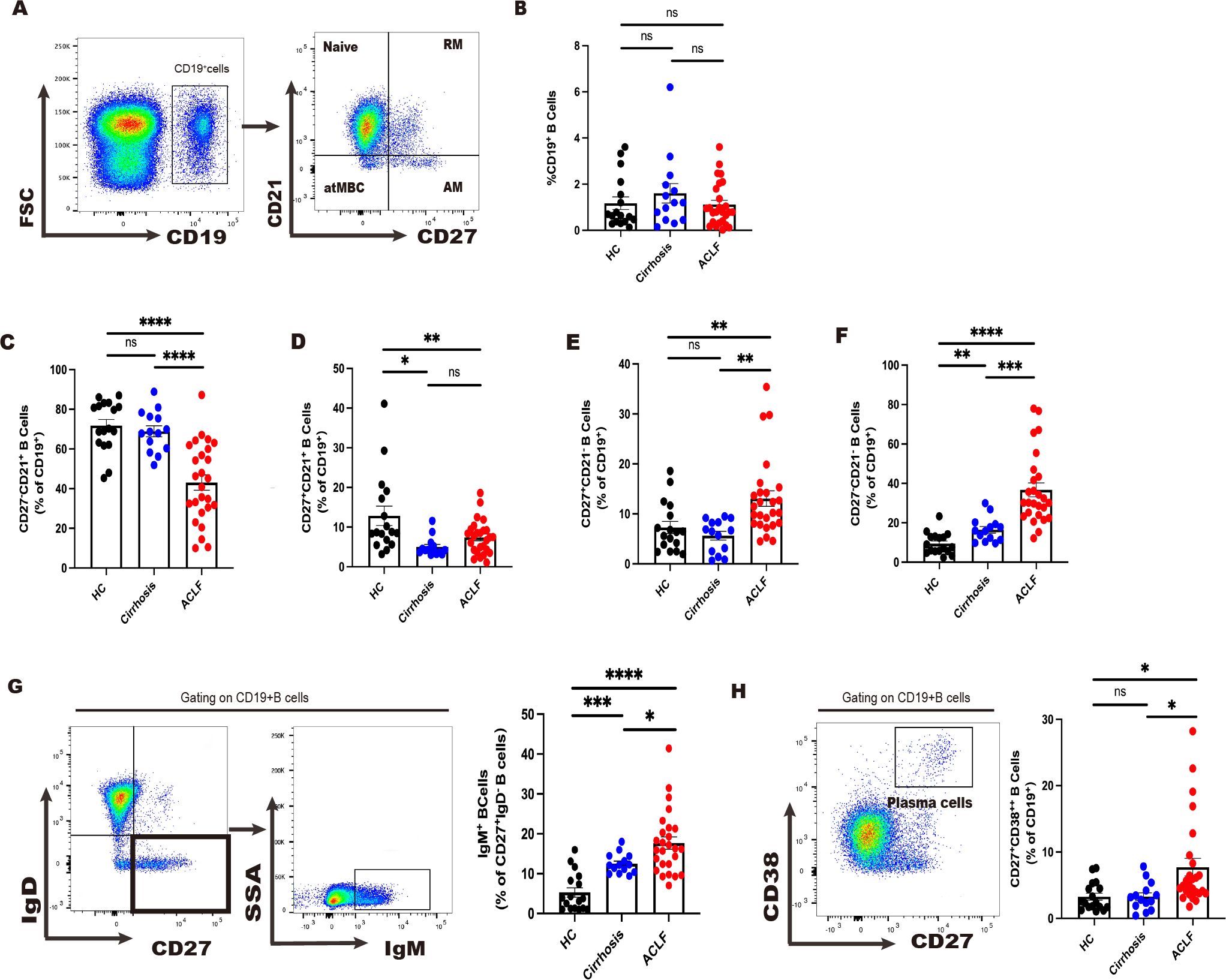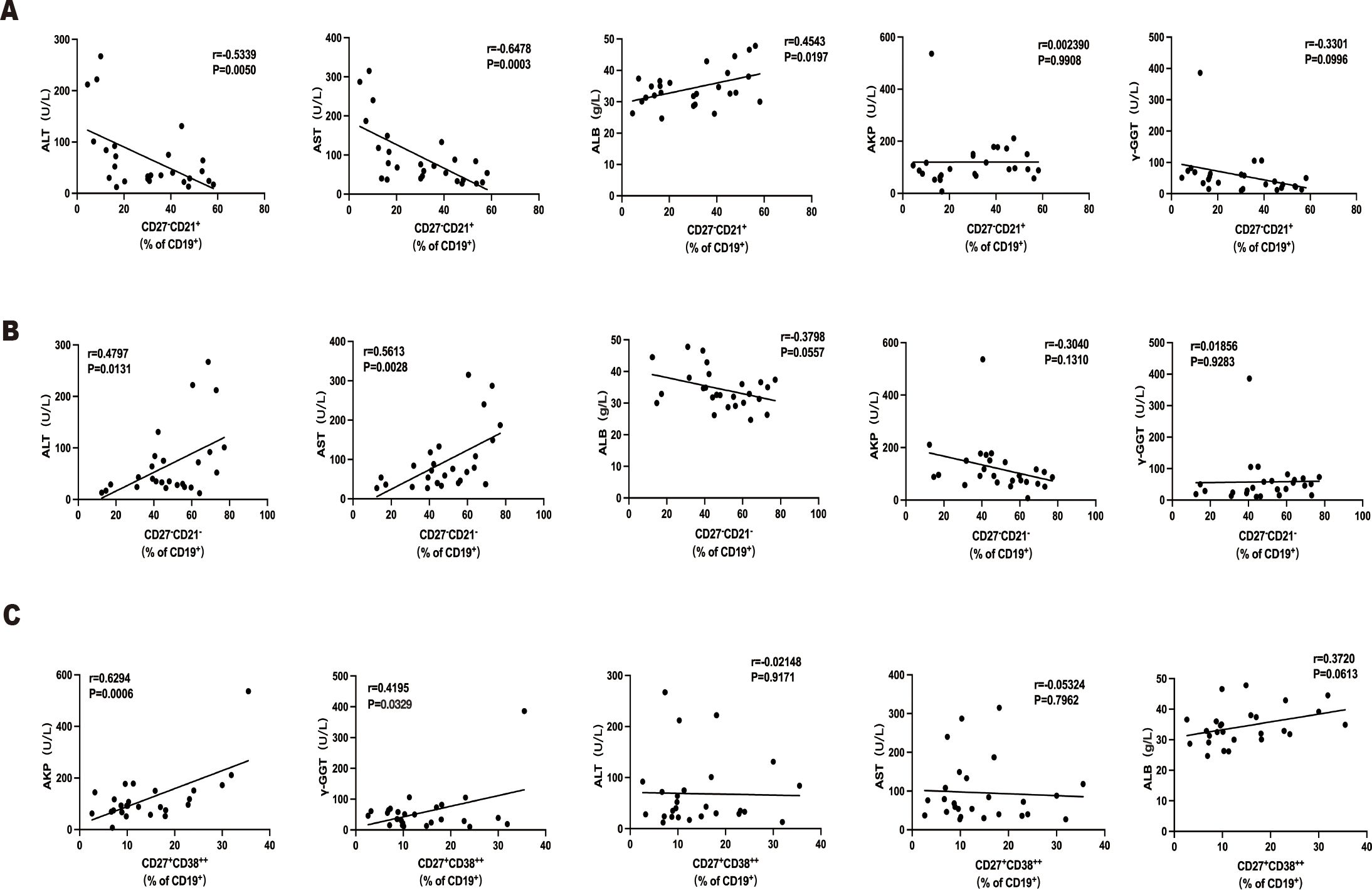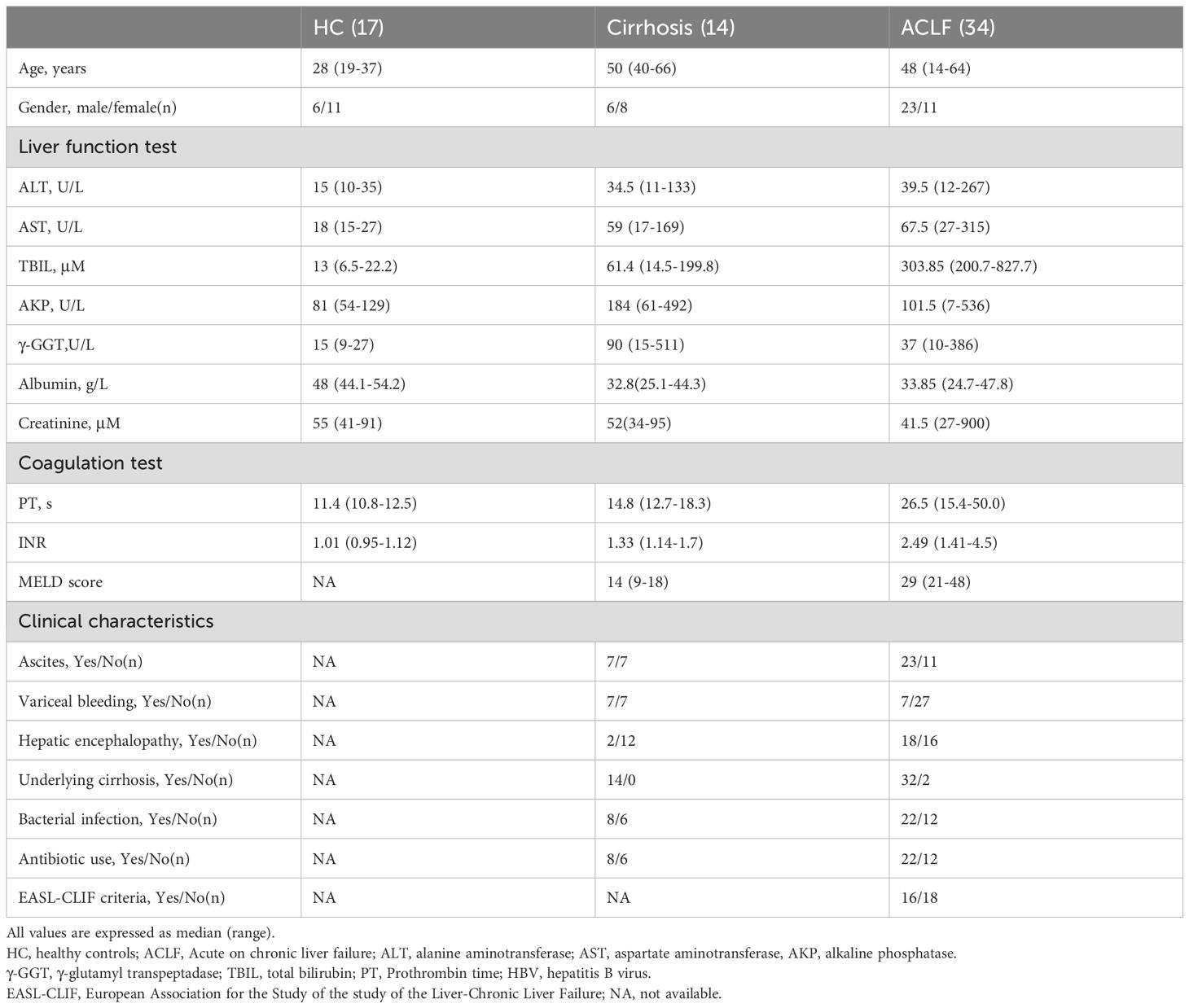- 1Department of Liver Surgery, Renji Hospital, School of Medicine, Shanghai Jiao Tong University, Shanghai, China
- 2Division of Gastroenterology and Hepatology, Key Laboratory of Gastroenterology and Hepatology, Ministry of Health, State Key Laboratory for Oncogenes and Related Genes, National Health Council (NHC) Key Laboratory of Digestive Diseases, Renji Hospital, School of Medicine, Shanghai Institute of Digestive Disease, Shanghai Jiao Tong University, Shanghai, China
- 3Department of Laboratory Medicine, Renji Hospital, School of Medicine, Shanghai Jiao tong University, Shanghai, China
A Corrigendum on
Characterization of intrahepatic B cells in acute-on-chronic liver failure
By Zhao Y, He W, Wang C, Cui N, Yang C, You Z, Shi B, Xia L and Chen X (2022) Front. Immunol. 13:1041176. doi: 10.3389/fimmu.2022.1041176
In the published article, there was an error in Figure 1 as published. A single point below 20 in the Cirrhosis group and three points near 80 in the ACLF group were determined to be incorrect. These errors have been corrected, and the updated data points have been incorporated into the figure. Consequently, the corresponding data in Figures 1D, 1E, and 1F have also been revised. The corrected Figure 1 and its caption, “Divergent peripheral B cell subsets in ACLF, Cirrhosis and HC,” appear below.

Figure 1. Divergent peripheral B-cell subsets in ACLF, cirrhosis, and HC. (A, B) The gating strategy of analysis of CD19+ B cells by flow cytometry and the ratio of CD19+ B cells in blood (HC, n = 17; cirrhosis, n = 14; ACLF, n = 26). (C–F) The ratio of CD27−CD21+CD19+ B cells, CD27+CD21+CD19+ B cells, CD27+CD21−CD19+ B cells, and CD27−CD21−CD19+ B cells in blood (HC, n = 17; cirrhosis, n = 14; ACLF, n = 26). (G) The gating strategy for grouping blood CD19+ B cells into IgD−IgM+ subset by flow cytometry and the ratio of IgD−IgM+CD19+ B cells in blood (HC, n = 17; cirrhosis, n = 14; ACLF, n = 26). (H) The gating strategy for grouping blood CD19+ B cells into CD27+CD38++ subset by flow cytometry and the ratio of CD27+CD38++CD19+ B cells in blood (HC, n = 17; cirrhosis, n = 14; ACLF, n = 26). *p < 0.05, **p < 0.01, ***p < 0.001, and ****p < 0.0001; ns, not significant.
Furthermore, there were errors in Figure 5 as published. The erroneous data was in patients with acute-on-chronic liver failure (ACLF). We preliminarily collected all the liver sections from patients receiving liver transplantation and analyzed their liver B cells. we first excluded hepatocarcinoma and then selected patients with high levels of inflammation, mainly based on their total bilirubin levels. As a result, Primary Biliary Cholangitis (PBC) patients were primarily included due to their high jaundice levels. According to the Asian Pacific Association for the Study of the Liver (APASL) diagnostic criteria, ACLF patients should meet with criteria of acute jaundice worsening, coagulopathy, and the presence of extrahepatic organ failure. The coagulation function (PT, INR) of 4 PBC patients did not meet the criteria and generally did not have extrahepatic organ failure, we excluded PBC patients from the ACLF cohort and collected another four Chronic Hepatitis B (CHB)-ACLF liver in our analysis in Figure 2. Notably, the supplementary table related to patient information in the paper is correct and the intergroup comparisons presented in Figure 2 were conducted using this updated ACLF cohort. Regrettably, the analysis of the new ACLF cohort with clinical parameters was not promptly updated in our correlation analysis in Figure 5. We have reanalyzed the data and recalculated the p-values and correlation coefficients (R values) in Figure 5. The corrected Figure 5 and its caption, “The association of intrahepatic B cells subsets with clinical parameters in ACLF patients,” appear below.

Figure 5. The association of intrahepatic B cells subsets with clinical parameters in patients with ACLF. (A) Correlations between the percentage of CD27−CD21+CD19+ B cells and ALT, AST, AKP, γ-GGT, and ALB of patients with ACLF. (B) Correlations between the percentage of CD27−CD21−CD19+ B cells and ALT, AST, AKP, γ-GGT, and ALB of patients with ACLF. (C) Correlations between the percentage of CD27+CD38++CD19+ B cells and ALT, AST, AKP, γ-GGT, and ALB of patients with ACLF.
And lastly, there were errors in Table 1. The demographic and clinical characteristics were incorrectly matched due to adjustments in patient inclusion and exclusion during cohort refinement. The corrected Table 1 and its caption, “The demographic and clinical characteristics of subjects,” appear below.
The authors apologize for this error and state that this does not change the scientific conclusions of the article in any way. The original article has been updated.
Publisher’s note
All claims expressed in this article are solely those of the authors and do not necessarily represent those of their affiliated organizations, or those of the publisher, the editors and the reviewers. Any product that may be evaluated in this article, or claim that may be made by its manufacturer, is not guaranteed or endorsed by the publisher.
Keywords: acute on chronic liver failure, atypical memory B cells, plasma cells, intrahepatic B cells, dysfunction
Citation: Zhao Y, He W, Wang C, Cui N, Yang C, You Z, Shi B, Xia L and Chen X (2025) Corrigendum: Characterization of intrahepatic B cells in acute-on-chronic liver failure. Front. Immunol. 16:1581969. doi: 10.3389/fimmu.2025.1581969
Received: 23 February 2025; Accepted: 14 April 2025;
Published: 02 May 2025.
Edited by:
Pietro Ghezzi, Brighton and Sussex Medical School, United KingdomReviewed by:
Tony Bruns, University Hospital RWTH Aachen, GermanyCopyright © 2025 Zhao, He, Wang, Cui, Yang, You, Shi, Xia and Chen. This is an open-access article distributed under the terms of the Creative Commons Attribution License (CC BY). The use, distribution or reproduction in other forums is permitted, provided the original author(s) and the copyright owner(s) are credited and that the original publication in this journal is cited, in accordance with accepted academic practice. No use, distribution or reproduction is permitted which does not comply with these terms.
*Correspondence: Xiaosong Chen, Y2hlbnhpYW9zb25nQHJlbmppLmNvbQ==; Lei Xia, ZHJ4aWFsZWlAaG90bWFpbC5jb20=; Bisheng Shi, c2hpYmlzaGVuZ0ByZW5qaS5jb20=
†These authors have contributed equally to this work
 Yudong Zhao
Yudong Zhao Wei He
Wei He Chenchen Wang
Chenchen Wang Nana Cui2
Nana Cui2 Changjie Yang
Changjie Yang Zhengrui You
Zhengrui You Xiaosong Chen
Xiaosong Chen